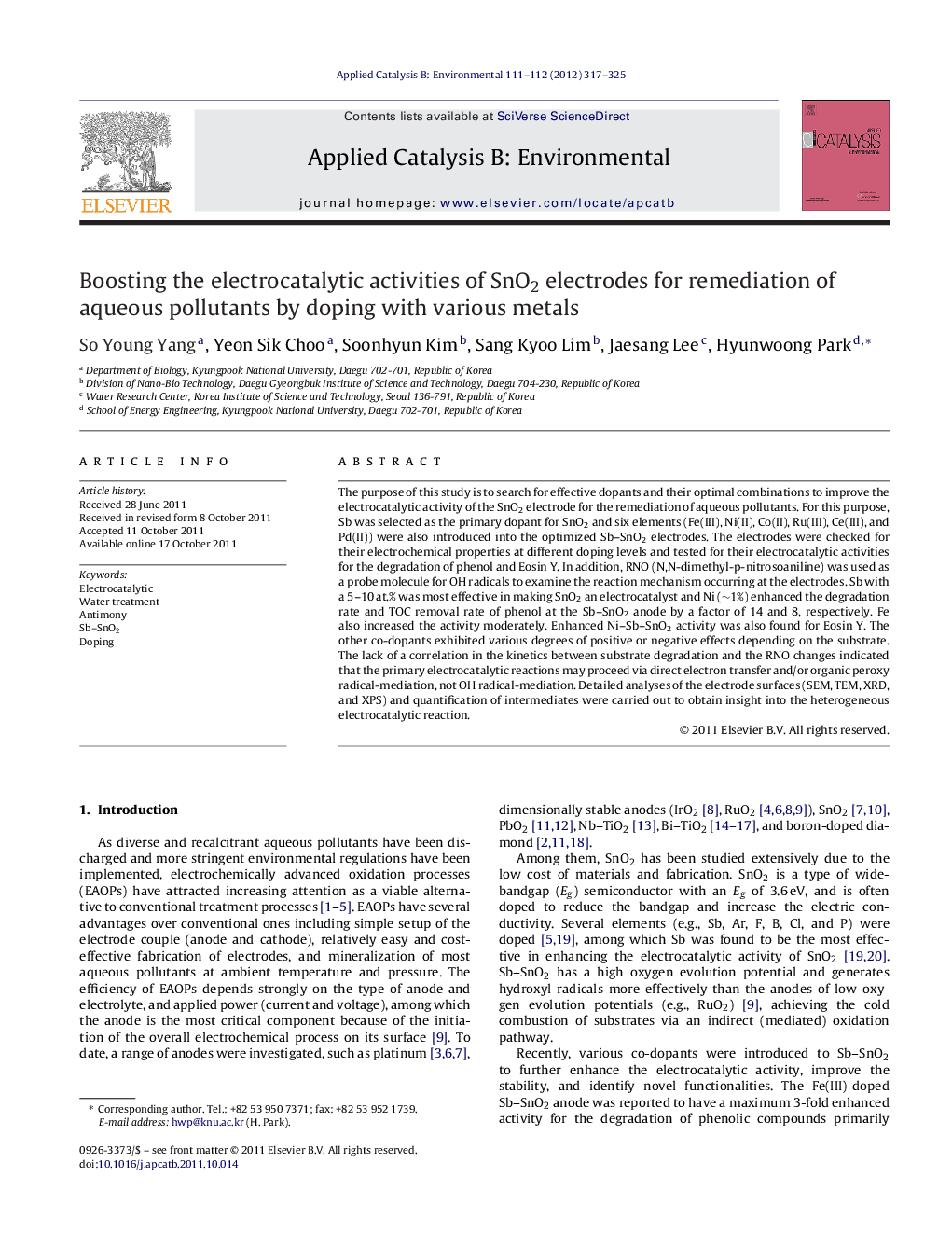| کد مقاله | کد نشریه | سال انتشار | مقاله انگلیسی | نسخه تمام متن |
|---|---|---|---|---|
| 46478 | 46440 | 2012 | 9 صفحه PDF | دانلود رایگان |

The purpose of this study is to search for effective dopants and their optimal combinations to improve the electrocatalytic activity of the SnO2 electrode for the remediation of aqueous pollutants. For this purpose, Sb was selected as the primary dopant for SnO2 and six elements (Fe(III), Ni(II), Co(II), Ru(III), Ce(III), and Pd(II)) were also introduced into the optimized Sb–SnO2 electrodes. The electrodes were checked for their electrochemical properties at different doping levels and tested for their electrocatalytic activities for the degradation of phenol and Eosin Y. In addition, RNO (N,N-dimethyl-p-nitrosoaniline) was used as a probe molecule for OH radicals to examine the reaction mechanism occurring at the electrodes. Sb with a 5–10 at.% was most effective in making SnO2 an electrocatalyst and Ni (∼1%) enhanced the degradation rate and TOC removal rate of phenol at the Sb–SnO2 anode by a factor of 14 and 8, respectively. Fe also increased the activity moderately. Enhanced Ni–Sb–SnO2 activity was also found for Eosin Y. The other co-dopants exhibited various degrees of positive or negative effects depending on the substrate. The lack of a correlation in the kinetics between substrate degradation and the RNO changes indicated that the primary electrocatalytic reactions may proceed via direct electron transfer and/or organic peroxy radical-mediation, not OH radical-mediation. Detailed analyses of the electrode surfaces (SEM, TEM, XRD, and XPS) and quantification of intermediates were carried out to obtain insight into the heterogeneous electrocatalytic reaction.
Ni-doped Sb–SnO2 anodes are very effective in degradation of aqueous pollutants through a direct electron transfer and/or organic peroxy radical-mediation.Figure optionsDownload as PowerPoint slideHighlights
► The electrocatalytic activity of SnO2 was highly affected by doping with metals.
► Sb with a 5–10 at.% was most effective in making SnO2 an electrocatalyst.
► Ni doping markedly accelerated the degradation of phenol and Eosin Y at Sb–SnO2.
► Direct electron transfer and involvement of peroxy radicals played a critical role.
Journal: Applied Catalysis B: Environmental - Volumes 111–112, 12 January 2012, Pages 317–325